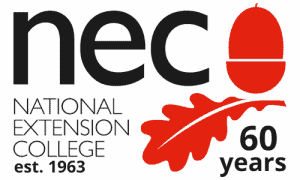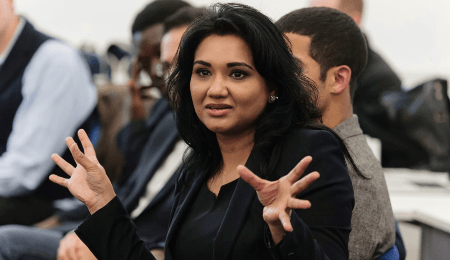This week’s blogger is former NEC GCSE English student Naila Din. Now a freelance arts advisor, Naila turned to teaching as a second career after studying graphic design at university and working as a graphic designer. She is a qualified secondary school teacher and was fast-tracked to the leadership role of director of specialism at a school in East Anglia. 20 years after Naila studied with NEC, teaching is still one of the most popular career choices for NEC students. In this blog post, published to coincide with the launch of NEC’s Career Tracks – Teaching, Naila reflects on what her experience as a graphic designer has enabled her to bring to students.
I never really appreciated just how valuable teaching skills and a teaching qualification are until I became a teacher myself. That’s even more the case when you’re teaching the arts. Because in our subject area, students are given the freedom to express themselves and explore their feelings. Taught effectively, they are doing nothing less than discovering their own identity. What I would like to share in this blog post is just how valuable the arts are in adding value to the lives of students of all ages.
The value of second career teachers
In the 21st century, teachers who come to teaching as a second career have a great deal to offer students in an academic setting learning to make sense of the world — as well as adults determined to improve their lives and understand the ever-changing global employment market.
Becoming a teacher was absolutely the best thing I could have ever done. I made the decision to go into the teaching profession after a successful career as a graphic designer and website designer. I began as a full-time teacher in the state sector, successfully applying for a teacher training place once I had studied GCSE English with NEC to improve the grade she got at school.
I’m certain I had more to offer my students because of what I had done before becoming a teacher. I knew what was happening in the creative industries and in the job market. Students valued being able to talk to a member of staff familiar with the mobile technologies they were using at home and at school to express and develop their ideas.
What the arts bring to education
Catering for each student individually is a challenge for all teachers. But if we want our students to be secure about their own identities and beliefs, it’s what we must do. The arts enable me to be responsive to my students’ unique needs.
Obtaining a teaching qualification opened the door to employment opportunities for my students in a knowledge economy. From this perspective, graphic design comes into its own. In the school in East Anglia where I taught, it was a hugely popular subject with boys. They wanted to work with computers and software, grasp the opportunity to explore disruptive materials like spray-can paints, and use digital technology to make models. Fine art would not have been as successful in fulfilling their need for experimentation.
The language of choice for students
It wasn’t until I came across NLP (Neuro Linguistic Programming) that I made the decision to take my teaching career in new direction, and one in which I believed I could have an even greater impact on the lives of young people. NLP showed me how through simple language I could help my students take greater responsibility and ownership of what they wanted for their lives. Most importantly, NLP enables them to ask themselves why they are making the choices they are making.
Working with my daughter, I began offering schools and colleges the 21st Century Leadership Program, a series of modules that prepare students for the world outside education, tailor-made for each of the schools we work with. The four modules cover emotional intelligence, health and wellness, leadership, and social media awareness.
The assessment of the programme shows just how much appetite there is for knowledge of this kind as students embark on independent lives as 21st century citizens. When young people are able to collaborate with educators and offer their peers a vehicle which empowers them, we start to see happier and more confident young people leaving the safety of the education system knowing not just what to think, but how to think.


Add a new comment
Current comments: 0